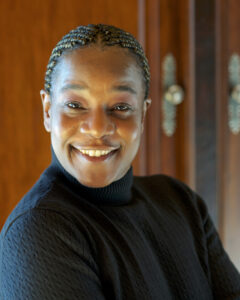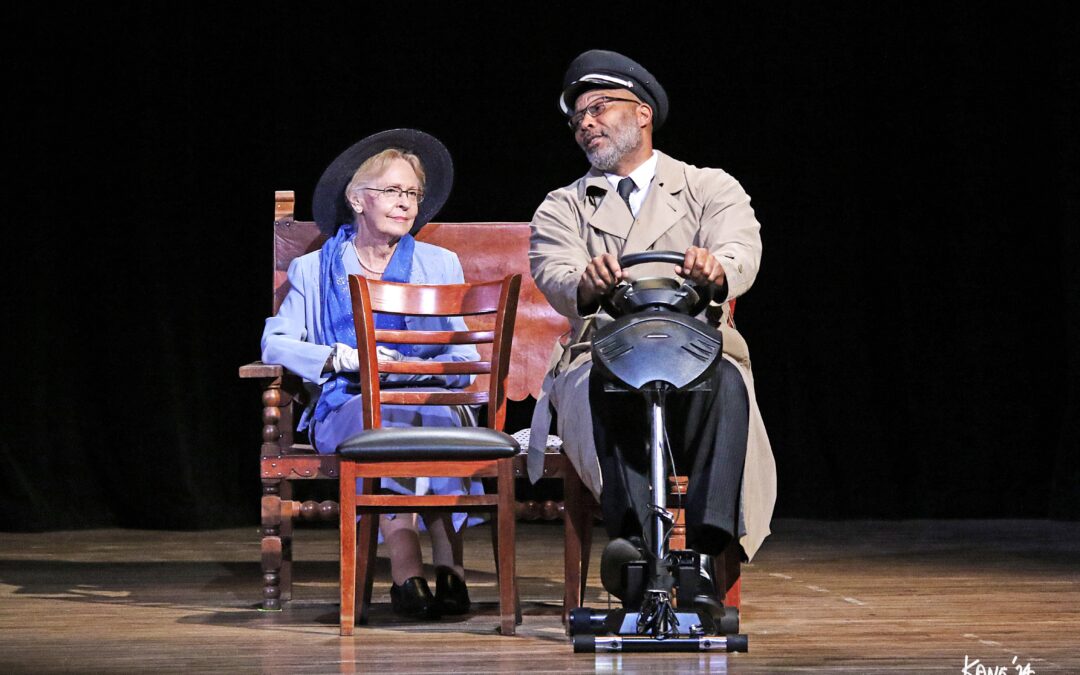The Hazeltine and Emerson Theater Collaborative are proud to bring “Driving Miss Daisy,” the winner of the 1988 Pulitzer Prize for Drama, to the stage February 21–23.
By Breeanya Hinkel • Courtesy Photos
The place is the deep South, the time 1948, just prior to the Civil Rights Movement. Having recently demolished another car, Daisy Werthan, a wealthy, sharp-tongued Jewish widow of 72, is informed by her son, Boolie, that henceforth she must rely on the services of a chauffeur. The person he hires for the job is a thoughtful, unemployed Black man, Hoke, whom Miss Daisy immediately regards with disdain and who, in turn, is not impressed with his employer’s patronizing tone and, he believes, her latent prejudice.
But, in a series of absorbing scenes spanning twenty-five years, the two, despite their mutual differences, grow ever closer to and more dependent on each other until they eventually become almost a couple. Slowly and steadily, the dignified, good-natured Hoke breaks down the stern defenses of the ornery old lady as she teaches him to read and write and, in a gesture of goodwill and shared concern, invites him to join her at a banquet in honor of Martin Luther King, Jr. As the play ends, Hoke has a final visit with Miss Daisy, now ninety-seven and confined to a nursing home, and while it is evident that a vestige of her fierce independence and sense of position remains, it is also movingly clear that they have both come to realize they have more in common than they ever believed possible—and that times and circumstances would ever allow them to admit publicly.
Driving Miss Daisy reinforces the moral lesson that every stage of our life is precious and should never be taken for granted.
Produced by Special Arrangement of Dramatist Play Service. Music by Robert Waldmen.
Playwright: Alfred Uhry
Director: Camilla Ross
Cast:
- Joan Westmoreland: Daisy Werthan
Ernest Pittman: Hoke Colburn
James Yaw: Boolie Werthan
 Prescott Woman Magazine interviewed director Camilla Ross about the play’s importance during Black History Month.
Prescott Woman Magazine interviewed director Camilla Ross about the play’s importance during Black History Month.
PWM: How can discussions about “Driving Miss Daisy” enhance our understanding of Black history?
Camilla: Black history is American history. You cannot have one without the other. The discussion, as a whole, helps us to collectively articulate and process issues of race, aging, empathy, and healing. Theater is central to examining values and attitudes and provides tools for addressing deep-rooted injustices. The program’s primary goal is to recognize and celebrate Black history as an understanding of history from a Black perspective. Too often, Black History Month is only a celebration of the achievements of Black people. By presenting “Driving Miss Daisy,” we can create a space of reflection about multiple experiences. These are the characters’ experiences in “Driving Miss Daisy,” the experiences of the actors and the directors in creating and performing “Driving Miss Daisy,” and the spectators’ experiences.
By discussing, we can open up an excellent dialogue about the validity of all these experiences, and it allows the audience to develop a constructive dialogue that collectively reflects on our country’s racial history and brings awareness to the importance of empathy and trust and how they are cultivated under challenging situations. The discussions can move us toward what Vincent Harding once called “a possible America.”PWM: You are offering a Sights, Sounds, Samplings pre-event dinner on February 21. Can you tell us more about this event?
Camilla: The Sights, Sounds, and Samplings event allows people of different backgrounds to experience the authentic culture of a people through theater, music, and food. Theater allows us to see the experiences, conversations, and lives of the characters portrayed on the stage.
The Sound of a culture connects us through music. It is the universal language and connector of all people. The music of the Black culture has permeated through all cultures. It is the very root of music as we know it. We can trace it back to its African roots and traditions.
The experiences of sharing in communion with food allow us to understand a culture and its people better. Where there is food, there is common ground, and from the common ground, we can find the connections that we all share.
To see a culture through the sights, sounds, and sampling of its culinary flare creates a beauty that connects us far beyond what we see with our eyes. The beauty of a culture is the differences that allow us to co-exist peacefully and equally.
For tickets and details, visit https://the-hazeltine.com/

